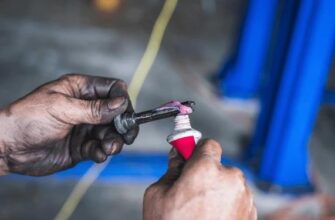Does your car’s air conditioner vent out a musty, moldy odor whenever you turn it on? Don’t ignore it – that funky AC smell is trying to tell you something. In this article, we’ll discuss common causes of air conditioner odors in cars and how to troubleshoot and fix the problem.
Why Does My Car’s AC Smell Bad?
There are a few main culprits that create unpleasant smells from your car’s air conditioning system:
Mold and Mildew Growth
Moisture buildup inside the AC system leads to mold and mildew growth in the ductwork and evaporator coil. This causes a stale, musty odor whenever the AC blows air. Mold spores blown into the cabin can also trigger allergies.
Bacteria Growth
Like mold, bacteria can thrive in the damp AC system and ventilation ducts. Bacteria growth causes foul odors and decomposing organic matter smells.
Trapped Pollen and Debris
Cabin air filters trap pollution, dust and pollen from outside air. But over time they can become clogged and moldy. This leads to smells being blown out when the AC turns on.
Chemical Contaminants
Foreign debris, oil, lubricants and chemicals inside the AC system and ductwork get circulated into the cabin air, causing chemical smells.
How To Diagnose and Fix Smelly AC Problems
Now that you know what causes smelly air conditioner issues, here are some troubleshooting tips and solutions:
Inspect the Cabin Air Filter
- Open glovebox and locate filter behind it
- Check for dirt buildup or signs of mold/mildew
- Consider replacing filter if older than 1 year
Clean the AC Drainage System
- Find the AC drainage pipes under the passenger dash
- Use a pipe cleaner to clear out blockages
- Flush with drain cleaner solution
Use an A/C System Cleaner Spray
- Run AC on max settings and recirculate mode
- Spray cleaner into intake vents according to directions
- Let cleaner work for 10-15 minutes
Change the Cabin Air Filter
- Locate filter box behind glovebox
- Remove old dirty filter and install new one
- Reset filter change reminder light if equipped
Clean AC Ductwork and Fins
- Remove plastic panels to access ducts
- Brush and vacuum debris from ducts
- Use fin comb to straighten bent fins
Flush the Evaporator Core
- Hook up flushing kit to access ports
- Pump cleaner through core to kill mold
- Requires professional service
Refill A/C System with Refrigerant
- Hook to A/C machine to check refrigerant level
- Recharge if pressure is low due to leaks
- Find and repair leaks if needed
Replace Moldy Ductwork
- Remove and inspect air ducts for mold damage
- Install new ductwork if mold is extensive
- Professional job – expect high labor cost
Preventing Future Air Conditioner Odors
Here are some tips to keep your car’s AC smelling fresh and prevent recurring issues:
- Change cabin air filter regularly
- Keep AC drainage system clean
- Use AC on max setting once a week
- Wipe moisture from windows/vents
- Find all AC refrigerant leaks
- Park in shade to reduce humidity
- Get frequent AC system inspections
To Summarize:
- Mold, bacteria and debris cause most bad AC smells
- Diagnose problem by checking filters, drainage and ducts
- Try using AC cleaner sprays and replacing filters
- For severe issues, may need professional flushing
- Prevent smells by cleaning system regularly
Following proper car AC maintenance goes a long way in keeping odors away. But if smells persist after trying DIY remedies, don’t hesitate to visit a technician for repairs. Driving with fresh, clean cabin air is important for health and comfort.








